Rare Edition Walker Evens American Photo Graphs the Museum of Modern Art

"Bad as it is, the world is potentially full of good photographs. Only to be adept, photographs take to be full of the globe."
Dorothea Lange and Daniel Dixon
In early on March, 1936, Dorothea Lange drove past a sign reading, "PEA-PICKERS CAMP," in Nipomo, California. At the time, she was working as a photographer for the Resettlement Assistants (RA), a Depression-era authorities bureau formed to raise public sensation of and provide aid to struggling farmers. Twenty miles down the route, Lange reconsidered and turned back to the camp, where she encountered a mother and her children. "I saw and approached the hungry and desperate mother, as if drawn by a magnet," she later recalled. "She said that they had been living on frozen vegetables from the surrounding field and birds that the children killed." 1 Lange took seven exposures of the woman, 32-year-former Florence Owens Thompson, with various combinations of her seven children. One of these exposures, with its tight focus on Thompson's face, transformed her into a Madonna-like figure and became an icon of the Corking Low and 1 of the nearly famous photographs in history. This paradigm was beginning exhibited at The Museum of Modern Art in 1940, under the title Pea Picker Family, California; past 1966, when the Museum held a retrospective of Lange's work, it had acquired its current title, Migrant Mother, Nipomo, California.
Lange had picayune interest in classifying her photographs as art: she made them to result social change. Although she had led a successful career as a portrait lensman in San Francisco throughout the 1920s, by 1933, at the pinnacle of the Great Depression, she began to photograph life outside her studio. On i early on excursion, Graflex camera in tow, she visited a nearby breadline, which a woman known as the "White Angel" had set up to feed the legions of unemployed. This resulted in White Affections Staff of life Line, San Francisco, a photograph of a homo turned away from the hungry crowd, his interlaced hands and set jaw often taken as representative of a collective despair. Lange became increasingly confident in her ability to employ photography to confront the urgent circumstances around her, and others—including her hereafter husband, the agricultural economist Paul Taylor—shortly recognized her talent.
In early 1935, on Taylor'due south recommendation, Lange began to work for the California Country Emergency Relief Administration. That summer, the agency was transferred to the RA, which had recently begun a photodocumentary project to draw attention to the plight of the rural poor. (In 1937, the RA would go the Farm Security Administration, or FSA.) Lange worked for the FSA periodically between 1935 and 1939, primarily traveling around California, the Southwest, and the South to document the hardships of migrant farmers who had been driven west by the twin devastations of the Groovy Depression and the Dust Bowl. On March ten, 1936, two of Lange's photographs of the Nipomo pea pickers' camp were published in The San Francisco News nether the headline "Ragged, Hungry, Bankrupt, Harvest Workers Alive in Squallor [sic]." The photo that became known as Migrant Mother was published in the paper the following day, on March 11, accompanying the editorial "What Does the 'New Deal' Mean To This Mother and Her Children?" The aforementioned mean solar day, the Los Angeles Times reported that the State Relief Administration would deliver food rations to 2,000 itinerant fruit pickers in Nipomo the next mean solar day.
Lange'south commitment to social justice and her faith in the power of photography remained constant throughout her life. In 1942, with the Us recently entered into World War II, the government'south War Relocation Authority assigned her to certificate the wartime internment of Japanese Americans, a policy she strongly opposed. She made critical images, which the government suppressed for the duration of the war. Later, Lange accompanied Taylor to Asia, where she continued to take photographs, including ones of the legs, feet, and easily of dancers in Republic of indonesia; she besides traveled to Ireland for LIFE magazine.
In an essay written with her son in 1952, Lange critiqued gimmicky photography equally being "in a state of flight," seduced by the "spectacular," "frenzied," and "unique" at the expense of the "familiar" and "intimate." It had get, she wrote, "more concerned with illusion than reality. It does not reverberate but contrives. It lives in a world of its own." 2 Confronting this tendency, she urged photographers to reconnect with the world—a call reflective of her own ethos and working method, which coupled an attention to aesthetics with a central business organization for the documentary. "That the familiar world is often unsatisfactory cannot exist denied, but it is non, for all that, one that we need abandon," she argued. "We need non be seduced into evasion of it any more than than we need be appalled by it into silence.… Bad as it is, the world is potentially full of good photographs. Simply to be skillful, photographs take to be full of the world." 3
Natalie Dupêcher, independent scholar, 2018
- Introduction
- Dorothea Lange (born Dorothea Margaretta Nutzhorn; May 26, 1895 – October xi, 1965) was an American documentary photographer and photojournalist, best known for her Depression-era work for the Farm Security Administration (FSA). Lange's photographs influenced the evolution of documentary photography and humanized the consequences of the Nifty Depression.
- Wikidata
- Q230673
- Introduction
- Documentary photographer notable for her hitting images of Low era America. From 1917-1919, Lange started out as an independent portrait photographer in San Francisco, but before long began photographing the homeless in order to bring attending to their plight. In 1935, she joined the Farm Security Administration and reported on living conditions in rural areas. Her images evidence non merely despair and loss, only likewise a sense of pride with which these people endured their circumstances. "Migrant Mother," a portrait of a world-weary mother and her three children is one of Lange's well-nigh well known images from this period.
- Nationality
- American
- Gender
- Female person
- Roles
- Artist, Lensman
- Names
- Dorothea Lange, Dorothea Lange Taylor, Russell Lee, Dorothea Margaretta Nutzhorn
- Ulan
- 500007674
Information from Getty's Union List of Creative person Names ® (ULAN), made available under the ODC Attribution License
-
Associated art terms include Photography.
312 works online
-

Our Selves: Photographs past Women Artists Exhibition catalogue, Hardcover, 152 pages
-
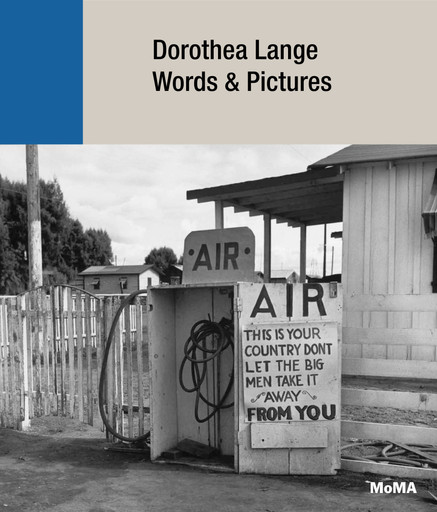
Dorothea Lange: Words & Pictures Exhibition catalogue, Hardcover, 176 pages
-
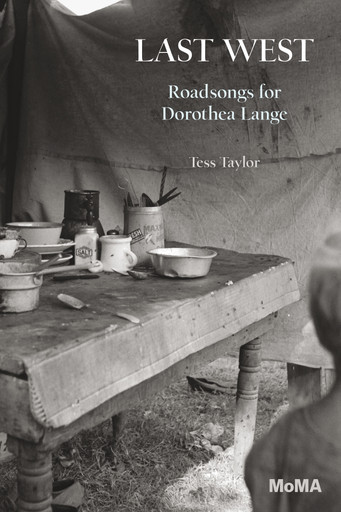
Concluding Westward: Roadsongs for Dorothea Lange Paperback, 64 pages
-
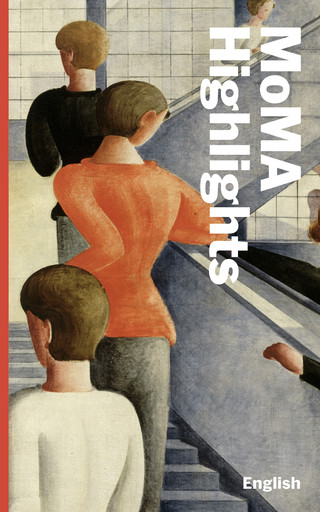
MoMA Highlights: 375 Works from The Museum of Modern Art Flexibound, 408 pages
-
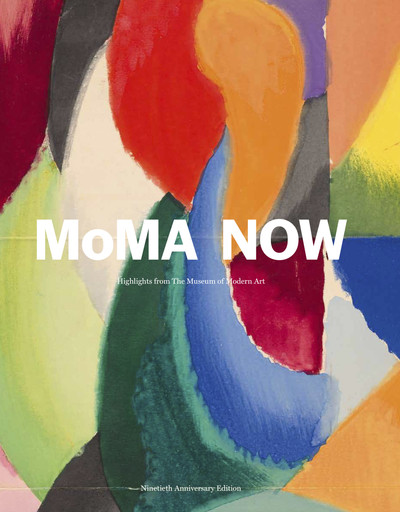
MoMA Now: Highlights from The Museum of Modern Fine art—Ninetieth Anniversary Edition Hardcover, 424 pages
-
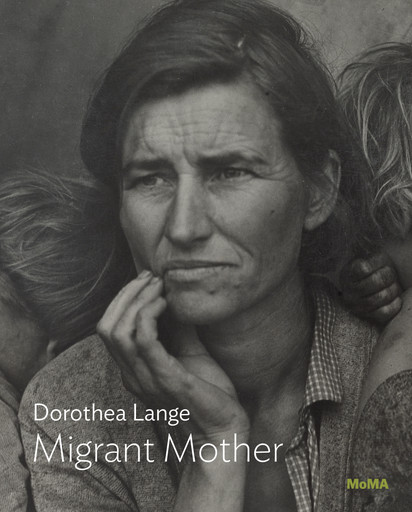
Dorothea Lange: Migrant Mother Paperback, 48 pages
-
Dorothea Lange Exhibition catalogue, Clothbound, pages
-
Dorothea Lange Exhibition catalogue, Paperback, pages
If you would similar to reproduce an image of a work of art in MoMA's collection, or an epitome of a MoMA publication or archival textile (including installation views, checklists, and press releases), please contact Art Resource (publication in North America) or Scala Archives (publication in all other geographic locations).
MoMA licenses archival audio and select out of copyright film clips from our film collection. At this time, MoMA produced video cannot be licensed by MoMA/Scala. All requests to license archival audio or out of copyright film clips should exist addressed to Scala Archives at [electronic mail protected]. Motion film moving-picture show stills cannot be licensed by MoMA/Scala. For access to movement picture film stills for inquiry purposes, please contact the Film Study Eye at [email protected]. For more information about film loans and our Circulating Film and Video Library, please visit https://www.moma.org/inquiry-and-learning/circulating-flick.
If you would similar to reproduce text from a MoMA publication, please email [email protected]. If yous would like to publish text from MoMA'south archival materials, please fill up out this permission form and send to [email protected].
This record is a work in progress. If you have additional data or spotted an error, please ship feedback to [email protected].
stallingstheethem.blogspot.com
Source: https://www.moma.org/artists/3373
0 Response to "Rare Edition Walker Evens American Photo Graphs the Museum of Modern Art"
Enviar um comentário